Your favourite Indian sweets and the interesting stories behind them
In India, goodies are an vital a part of the social, non secular and cultural milieu. No party is entire with out the traditional 'mithais'. In reality, all the deities have their favorite cakes. For instance, Ganesha is keen on modak, Hanuman loves laddoo, Lord Shiva likes Thandai, and the adorable little Lord Krishna is keen on peda. Some of those goodies are masses of years antique and feature some truely interesting tales attached to them. Here is a listing of a few popular Indian chocolates and legends associated with them.
Gulab Jamun

Soft and succulent, the two phrases that outline Gulab Jamun are absolutely apt for it. It is one of the famous candy dishes of India that is loved fine on unique events and gala's. But, do you realize that this fantastic dessert has a history of its personal? Well, first of all, Gulab Jamun isn't always even Indian. Surprised? Here is more! It came from the Persian (contemporary, Iran) delicacies and has originated from an Arabic dessert - Luqmat al-qaadhi that actually interprets to ‘The Judge’s Bite’. This dessert were given popularity in the course of the Mughal technology and became later called Gulab Jamun, and become renamed using Persian words gul (flower), ab (water), and jamun (Indian fruit with similar shape & length).
Rasgulla
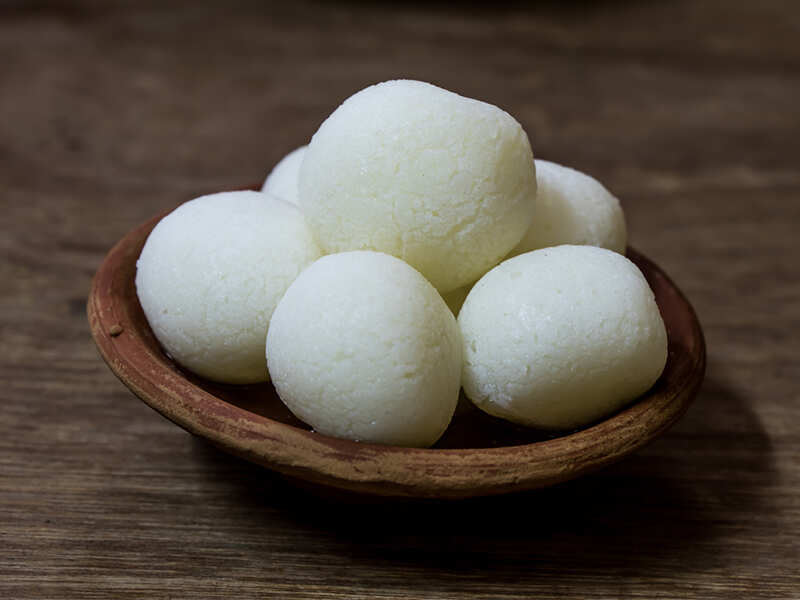
This smooth and syrupy dessert is world well-known as a Bengali dessert. There isn't any occasion or ceremony with out the heavenly presence of Rasgulla. Made of chhena or the selfmade cottage cheese, the original name of Rasgulla is Khira Mohana, and it is stated to have its origin in Odisha. The legend that proves it's far centuries vintage indicates it to be the favourite of the Gods themselves. It is stated that once Lord Jagannath become going for Rath Yatra, he didn’t bring his consort, Lakshmi. As expected, Lakshmi become disillusioned and to pacify her, Lord Jagannath provided her Rasgulla. Since then, it’s a subculture to provide Rasgulla to Goddess Lakshmi on the 9th day of Rath Yatra to pacify her. Only after she has savoured the mithai, the 3 deities (Jagannath, Balaram, and Subhadra) can input the temple.
Laddoo
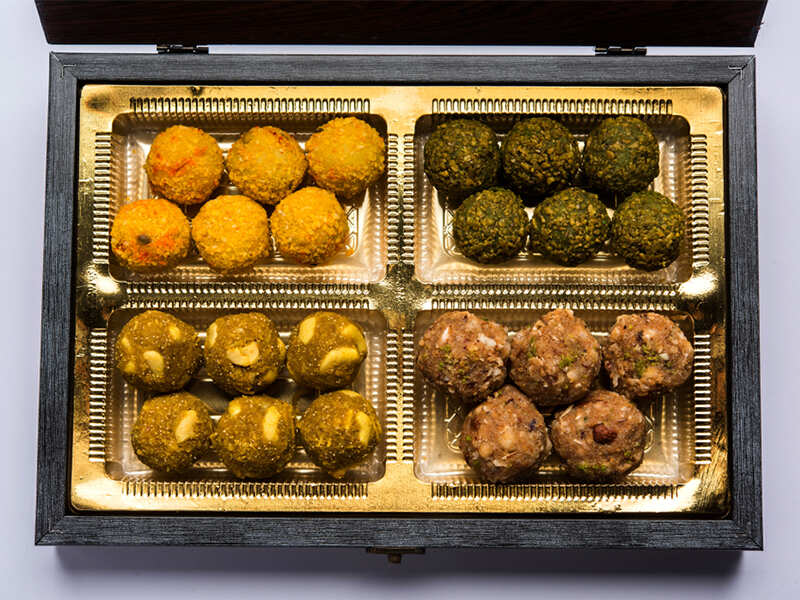
Be it the Motichoor Laddoo or the Boondi Laddoo, or even the Besan Laddoo, this sweet dish is something that can be without problems made at home. An indispensable a part of festivities and unique activities, Laddoo has a records of its very own. You will be surprised to know but as in keeping with the traditions, Laddoo became fed to growing ladies to stability their hormones. Now you already know why Gond Laddoo, Sonth Ke Laddoo, and Panjiri Laddoo are recommended in being pregnant, puberty and in winters.
Sandesh
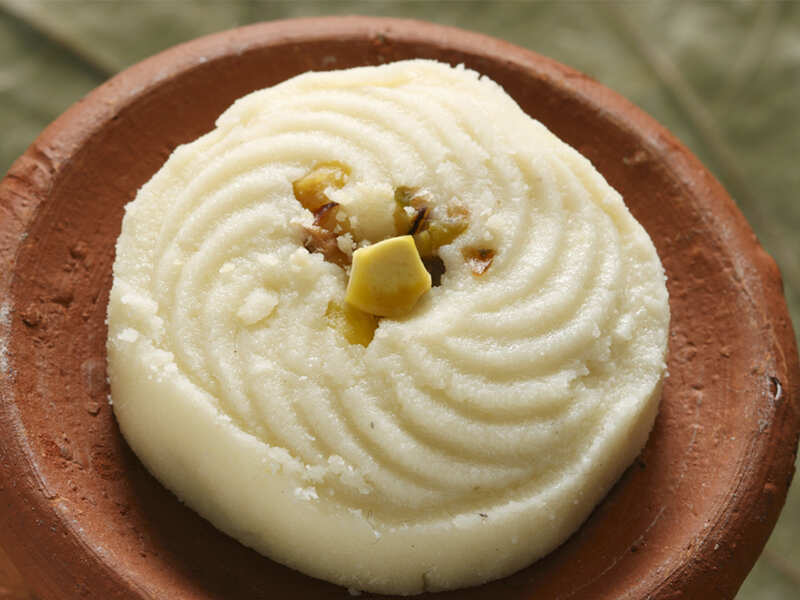
Sandesh, as is well known, is one of the famous chocolates of Bengal, and is made the use of chhena that is believed to were delivered by using the Portuguese. You will be amazed to understand however Sandesh was brought a lot before Bengali Rasgulla got here into life. In the earlier times, chhena became mixed with sugar or molasses in Calcutta to prevent it from getting wasted. And so, got here the very first Sandesh within the form ‘Makha Sandesh’, whilst a superb mind started mixing khoya, cardamom powder, and sugar with the candy chhena. It was the famous candy-maker from Bengal named Bhim Chandra Nag, who eventually moulded the sweet and made it the ‘Sandesh’ of our times. Another thrilling story about Sandesh is that on the outlet of the Dakshineswar Kali Temple, Rani Rashmoni of Jaan Bazaar ordered 18 maunds of Sandesh!
Jalebi
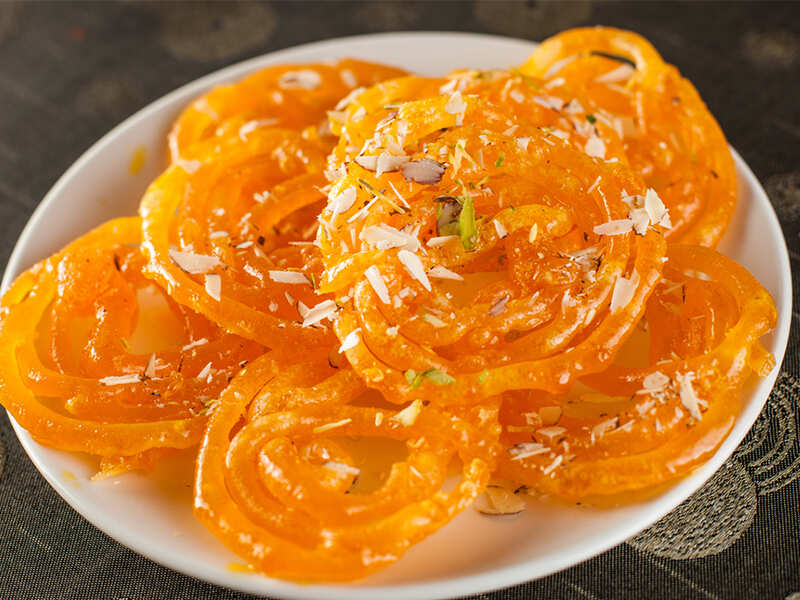
The heat and juicy Jalebi, while combined with chilled rabri, is something that a person can kill for! But, do you recognize that this candy dish that we were playing for ages, isn't Indian. As consistent with the Oxford Companion, ‘Kitab-al-Tabeekh’, a cookbook by using a Baghdadi author has the unique recipe of this well-known dessert that has numerous names to its credit. Apart from the truth that Jalebi is not Indian, it's been in existence for 500 years in India. Also, the very call Jalebi comes from a Sanskrit word ‘Jalvallika’ that means ‘full of water’. You will be surprised to understand however Jalebi is known to remedy headaches and cold while thinking about heat milk in Northern India and Pakistan. This combination makes you experience heat and is enjoyed by way of many humans in winters.
Agra Ka Petha
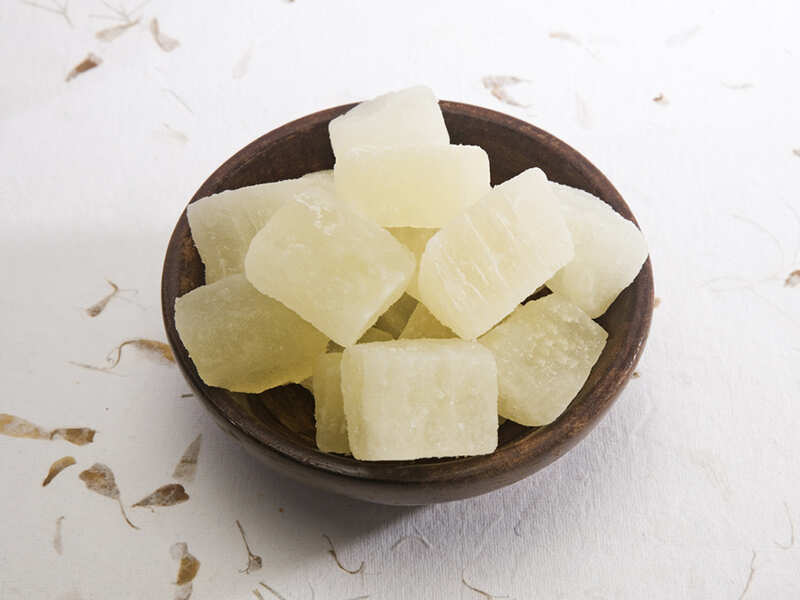
A ride to the famous Taj Mahal and nobody comes empty handed. The journey to Agra is usually accompanied through the translucent and scrumptious Pethas which can provide immediate electricity. These Pethas do taste yummy, however do you already know that they originated within the royal kitchen of the Mughal Empire? It turned into Emperor Shah Jahan who ordered for a sweet to be made as white because the Taj Mahal. And as many as 500 workers were appointed to make Petha! Also, it is believed that Petha is as vintage as Taj Mahal as it became made for the 21,000 people who have been running on Taj Mahal to provide them with extra power. Petha is frequently known as God’s sweet, as it's miles considered because the purest sweetmeat ever made in the international. Reason? It is just made the use of pumpkin, sugar and of route water!
Mysore Pak
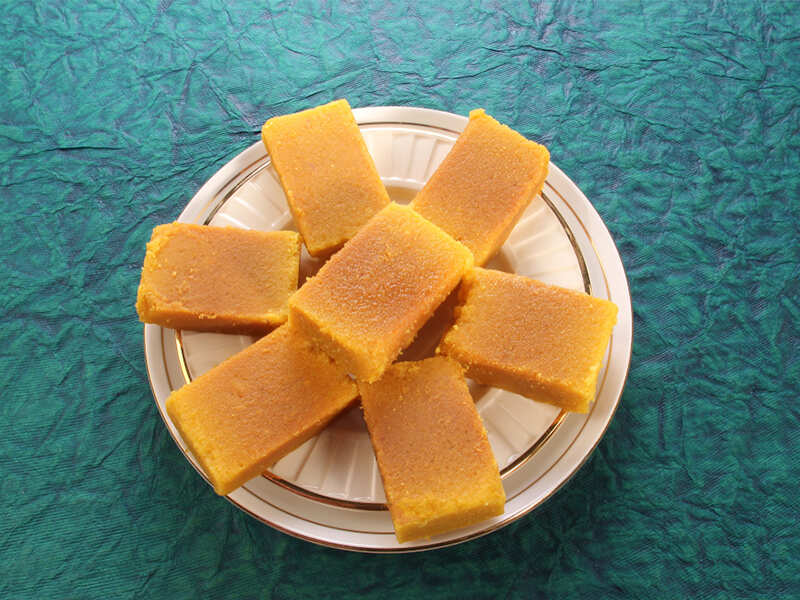
It is a 3-element dessert organized the use of gram flour, ghee, and sugar. It’s records dates back to the seventeenth or 18th century and is thought to be a conventional South Indian sweet that finds relevance on unique occasions and gala's. It is stated that Kakasura Madappa, the top chef inside the Royal Kingdom of Mysore within the reign of King Krishna Raja Wodeyar who made Mysore Pak for the primary time. The story goes like this that the King turned into equipped to have lunch, but, there was one spot vacant in his Thali. And so, Madappa quick organized a candy dish using gram flour, ghee, and sugar and let it cool down. By the time, the King finished his meal and became looking for sweet, Madappa served him the cooled cake. The sweet melted in his mouth and the King desired another one and then asked for its call. Madappa was so frightened at that time that he named it ‘Mysore Paka’, wherein ‘paka’ approach a sweet concoction in Kannada. Soon, it become given the repute of royal sweet and from there on the legacy maintains.
Shahi Tukda
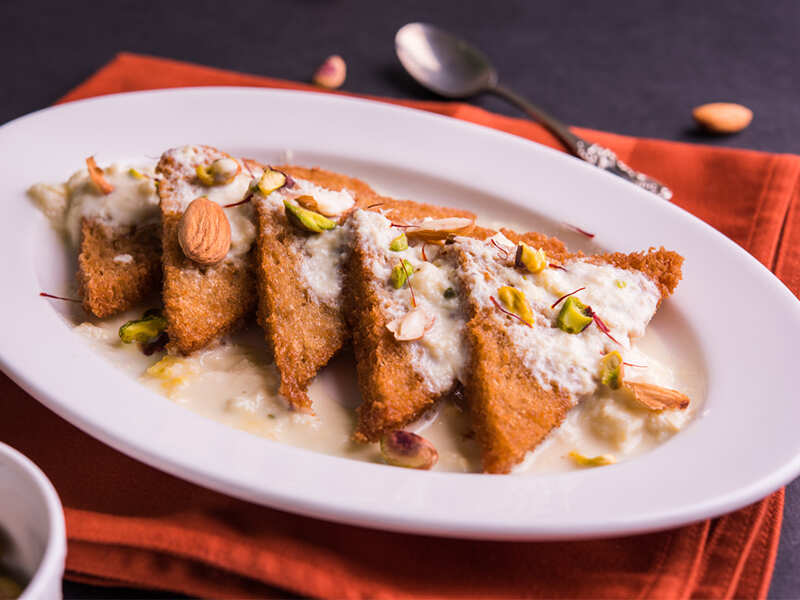
Another dessert that’s known to have its foundation in Mughlai delicacies is – Shahi Tukda, the crispy, velvety royal dessert. As plenty as you love these deep-fried sweetbreads, you may be amazed that it turned into the Mughals who added them in India. How it came into lifestyles, is a very interesting tale. As per a legend, a King and his troupe had been traveling for a hunt and that they stopped at Nile river to have some food. The villagers had been very a lot excited on hearing this and taken ahead their nearby cook dinner Umm Ali, to cook a scrumptious meal for the King and his troupe. As they did not have many sources, he took some stale bread and dipped them in a rich gravy made the usage of nuts, cream, sugar, and milk. Everyone changed into so hungry that they cherished this dessert, which supplied them immediate power. Because it changed into organized for the Royals, it was named ‘Shahi Tukda’ meaning royal piece.
Gulab Jamun

Soft and succulent, the two phrases that outline Gulab Jamun are absolutely apt for it. It is one of the famous candy dishes of India that is loved fine on unique events and gala's. But, do you realize that this fantastic dessert has a history of its personal? Well, first of all, Gulab Jamun isn't always even Indian. Surprised? Here is more! It came from the Persian (contemporary, Iran) delicacies and has originated from an Arabic dessert - Luqmat al-qaadhi that actually interprets to ‘The Judge’s Bite’. This dessert were given popularity in the course of the Mughal technology and became later called Gulab Jamun, and become renamed using Persian words gul (flower), ab (water), and jamun (Indian fruit with similar shape & length).
Rasgulla

This smooth and syrupy dessert is world well-known as a Bengali dessert. There isn't any occasion or ceremony with out the heavenly presence of Rasgulla. Made of chhena or the selfmade cottage cheese, the original name of Rasgulla is Khira Mohana, and it is stated to have its origin in Odisha. The legend that proves it's far centuries vintage indicates it to be the favourite of the Gods themselves. It is stated that once Lord Jagannath become going for Rath Yatra, he didn’t bring his consort, Lakshmi. As expected, Lakshmi become disillusioned and to pacify her, Lord Jagannath provided her Rasgulla. Since then, it’s a subculture to provide Rasgulla to Goddess Lakshmi on the 9th day of Rath Yatra to pacify her. Only after she has savoured the mithai, the 3 deities (Jagannath, Balaram, and Subhadra) can input the temple.
Laddoo

Be it the Motichoor Laddoo or the Boondi Laddoo, or even the Besan Laddoo, this sweet dish is something that can be without problems made at home. An indispensable a part of festivities and unique activities, Laddoo has a records of its very own. You will be surprised to know but as in keeping with the traditions, Laddoo became fed to growing ladies to stability their hormones. Now you already know why Gond Laddoo, Sonth Ke Laddoo, and Panjiri Laddoo are recommended in being pregnant, puberty and in winters.
Sandesh

Sandesh, as is well known, is one of the famous chocolates of Bengal, and is made the use of chhena that is believed to were delivered by using the Portuguese. You will be amazed to understand however Sandesh was brought a lot before Bengali Rasgulla got here into life. In the earlier times, chhena became mixed with sugar or molasses in Calcutta to prevent it from getting wasted. And so, got here the very first Sandesh within the form ‘Makha Sandesh’, whilst a superb mind started mixing khoya, cardamom powder, and sugar with the candy chhena. It was the famous candy-maker from Bengal named Bhim Chandra Nag, who eventually moulded the sweet and made it the ‘Sandesh’ of our times. Another thrilling story about Sandesh is that on the outlet of the Dakshineswar Kali Temple, Rani Rashmoni of Jaan Bazaar ordered 18 maunds of Sandesh!
Jalebi

The heat and juicy Jalebi, while combined with chilled rabri, is something that a person can kill for! But, do you recognize that this candy dish that we were playing for ages, isn't Indian. As consistent with the Oxford Companion, ‘Kitab-al-Tabeekh’, a cookbook by using a Baghdadi author has the unique recipe of this well-known dessert that has numerous names to its credit. Apart from the truth that Jalebi is not Indian, it's been in existence for 500 years in India. Also, the very call Jalebi comes from a Sanskrit word ‘Jalvallika’ that means ‘full of water’. You will be surprised to understand however Jalebi is known to remedy headaches and cold while thinking about heat milk in Northern India and Pakistan. This combination makes you experience heat and is enjoyed by way of many humans in winters.
Agra Ka Petha

A ride to the famous Taj Mahal and nobody comes empty handed. The journey to Agra is usually accompanied through the translucent and scrumptious Pethas which can provide immediate electricity. These Pethas do taste yummy, however do you already know that they originated within the royal kitchen of the Mughal Empire? It turned into Emperor Shah Jahan who ordered for a sweet to be made as white because the Taj Mahal. And as many as 500 workers were appointed to make Petha! Also, it is believed that Petha is as vintage as Taj Mahal as it became made for the 21,000 people who have been running on Taj Mahal to provide them with extra power. Petha is frequently known as God’s sweet, as it's miles considered because the purest sweetmeat ever made in the international. Reason? It is just made the use of pumpkin, sugar and of route water!
Mysore Pak

It is a 3-element dessert organized the use of gram flour, ghee, and sugar. It’s records dates back to the seventeenth or 18th century and is thought to be a conventional South Indian sweet that finds relevance on unique occasions and gala's. It is stated that Kakasura Madappa, the top chef inside the Royal Kingdom of Mysore within the reign of King Krishna Raja Wodeyar who made Mysore Pak for the primary time. The story goes like this that the King turned into equipped to have lunch, but, there was one spot vacant in his Thali. And so, Madappa quick organized a candy dish using gram flour, ghee, and sugar and let it cool down. By the time, the King finished his meal and became looking for sweet, Madappa served him the cooled cake. The sweet melted in his mouth and the King desired another one and then asked for its call. Madappa was so frightened at that time that he named it ‘Mysore Paka’, wherein ‘paka’ approach a sweet concoction in Kannada. Soon, it become given the repute of royal sweet and from there on the legacy maintains.
Shahi Tukda

Another dessert that’s known to have its foundation in Mughlai delicacies is – Shahi Tukda, the crispy, velvety royal dessert. As plenty as you love these deep-fried sweetbreads, you may be amazed that it turned into the Mughals who added them in India. How it came into lifestyles, is a very interesting tale. As per a legend, a King and his troupe had been traveling for a hunt and that they stopped at Nile river to have some food. The villagers had been very a lot excited on hearing this and taken ahead their nearby cook dinner Umm Ali, to cook a scrumptious meal for the King and his troupe. As they did not have many sources, he took some stale bread and dipped them in a rich gravy made the usage of nuts, cream, sugar, and milk. Everyone changed into so hungry that they cherished this dessert, which supplied them immediate power. Because it changed into organized for the Royals, it was named ‘Shahi Tukda’ meaning royal piece.
Comments
Post a Comment